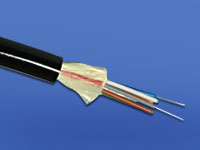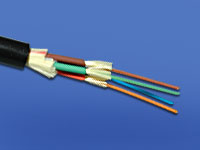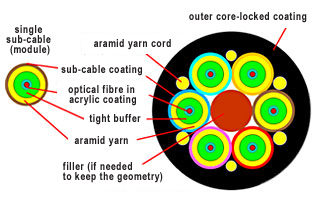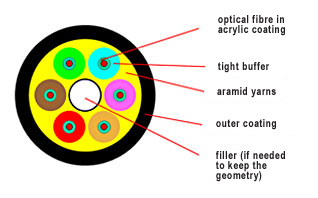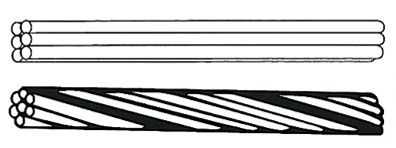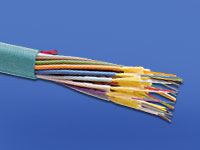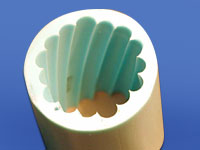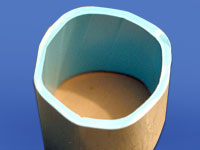HARSH ENVIRONMENT CABLES
|
It is not possible to assembly a good quality, special application fibre optic cable harness without using a proper optical fibre cable. The cables used for telecom applications and cables used for special, harsh environment applications represent totally different worlds. That is why their design and construction is completely unlike.
The most critical issue for all above listed applications is the flexibility of the cable. It has to have a feature to be reeled and unreeled many times and besides maintaining its transmission parameters, it has to lay loose and flat on the surface when deployed, with no shape-memory effect. For the fact that the cables need to be operated in a broad range of temperatures, it is also very important that the cable retain their flexibility within the whole operating temperature range. Tight buffer (no gel-filled) are by far the best solution for harsh environment application. Their tight structure is by definition designed to carry high axial stress (compression and tensile strength) and radial stress (crushing), while maintaining small diameter and the ideal moisture intake protection. The cables keep high flexibility and durability after many bending cycles, so they are able to be reeled and unreeled many times without loosing their transmission parameters. The tight buffer cables are ideal to be terminated with the high performance, harsh environment fibre optic connectors. Distribution cables (mini-breakout) are made of few separate optical fibres of 125 µm diameter, each of them coated with acrylic and protected by the tight buffer of 900 µm diameter. The protection of buffered fibres are aramid (Kevlar) yarns which are also stress carrying element. The outer jacket, mostly of polyurethane, completes the construction. The advantages of this solution are: small outer diameter, small bend radius and low weight. The central location of the fibres prevents the fibres from the exposure to the stresses applied to the outer section of the cable when being bent.
Breakout Cable these cables are highly versatile. They can serve as a trunk line cables between buildings as well as connect data communication equipment installed on different floors of the same building. They occur both indoor and outdoor (armor may be metal or dielectric). Few to tens of fibers, each in their own tight tube (buffer) are wrapped with aramid fiber ensuring mechanical resistance. The whole is covered with a jackt to which an outer protective armor can be applied optionally. The optional armor can be made of corrugated steel tape or glass fibers. This cable allows direct installation of the fiber optic connectors on the buffer of 900μm. In comparison to gelled cables it significantly increases system reliability, simplifies cable mounting in the connection rack, reduces the time required for installation and installation costs.
One of the main differences between the standard telecom cable and the military or special application cables is helical turn of the fibres or the sub-cables. The fibres or sub-cables are pressed against each other on pushed into the centre of the cable, which caused the following phenomenon:
That features:
|
||||||||||||||||||||||||||||||||||||||||||||||||||||||||||













